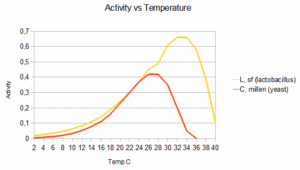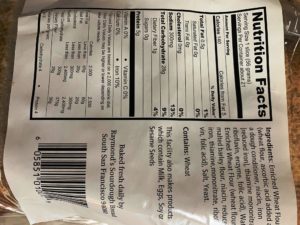Extra-Tangy Sourdough Bread
This bread, with its mellow tang, is perfect for those who like their sourdough bread noticeably sour, but not mouth-puckeringly so. For extra-sour flavor, add 1/4 teaspoon sour salt (citric acid).
Ingredients
- 1 cup "fed" sourdough starter
- 1.6 cups lukewarm water (stickier causes more air bubbles)
- 5 cups King Arthur Unbleached All-Purpose Flour
- 2.25 teaspoons salt
- 1 teaspoon sugar
- 1/2 teaspoon sour salt (Citric Acid) optional, for extra-sour bread, citric acid
- 1 teaspoon Ascorbic Acid optional to help the starter
- 1/2 teaspoon baking soda Optional but recommended
- 2 teaspoon yeast optional if mixing 2 types of batter
Instructions
- Verify your Sourdough Starter:Drop a spoonful of starter into a glass of water and see if it floatsIf rising yeast dough or fed sourdough starter sinks in water, it’s definitely not ready to continue to the next step in your recipe.But just because it floats doesn't necessarily mean they're good to go.Best way to tell if your starter dough has fully risen? Poke it with a wet index finger. If the indentation remains, it's ready to go. If the dough rebounds and your finger mark disappears, it needs more time.What are the signs of a perfectly ripe starter? It's very bubbly and is reliably doubling in size within 6 to 8 hours of feeding.
- Mix the starter, water, and 3 cups of the flour. Beat vigorously for 1 minute.. Using a Danish Dough Whisk will help.
- Knead dough until it passes the “window pane test”: a small piece of dough will stretch between four fingers without breaking thin enough to allow light to pass through.
- Cover, and let rest at room temperature for 4 hours. If you live in cooler climate, consider 12 hours at 68F or 4 hours at 76F. You might want to use a proofing box. 76F is the ideal temperature. Our oven light produces a temperature of 88F (31C). Refrigerate overnight, for about 12 hours or simply leave out if you live in a cooler climate.
- Add the remaining ingredients: 2 cups of flour, sugar, salt, and sour salt, if using. Knead to form a smooth dough and test again using the window-pane method.
- Shape the dough into a loaf or round ball. Adding baking soda at this time will help your bread from being flat but might kill some of the sour flavors so you should experiment with this technique. Place in a pan or proofing basket, or in a lightly greased bowl at least double the size of the dough. Alternately split the mixture into 2 round balls if you don't want to reshape and have a second rise. Cover lightly with a towel or plastic wrap. Allow the dough to rise for 4-24 hours depending on the temperature. If desired, a short (4-12 hours) proofing period can be used and the dough can be punched down, reshaped, and allowed to rise a second time, but a second proofing period is not required.
- If doing the 2nd rise, cover the reshaped dough and let rise until very puffy, about 2 to 4 hours again depending on room temerature. Don't worry if the loaves spread more than they rise; they'll pick up once they hit the oven's heat. Towards the end of the rising time, preheat the oven to 500°F
- Understand this: sourdough bread (especially sourdough without added yeast) is as much art as science; everyone's timetable will be different. So please allow yourself to go with the flow, and not treat this as an exact, to-the-minute process.
- You can heat a dutch oven or a cast iron combo cooker to help keep the moisture in the bread while rising. Spraying the surface of the dough will help the dough expand in size. Commercial ovens inject steam to do this. Parchment paper with a bottom layer of aluminum foil will help you remove the baked bread from a dutch oven. In our house, we have a tray filled with lava rocks and a pizza stone. We place a few ice cubes on the stone after placing the dough on it and cover with a large stainless salad bowl or large roasting pan. Leaving a place for steam to enter, we then put water on the lava rocks
- Bake at 500°F for 20 minutes. Then remove the lid, roasting pan or salad bowl from the top of the loaf and bake another 30 minutes at 450 F for another 30 (depending on loaf size). until it's a very deep golden brown. Remove it from the oven, and cool on a rack. Cool for at least 1 hour before slicing.
- Tricks that Commercial Bakers use:Some "Sourdough" factories add Ascorbic Acid to their sourdough to make the "levain" more active. They wait for the dough to rise and close to that rise they make some regular dough using yeast. It's about a 60/40 ratio but I could be wrong. See the attached ingredients list from "Raymonds" sourdough of South San Francisco. PS. There are no "Bread Police" to give you a ticket. Do what you like and let me know.
Video
Notes
What makes the sour in sourdough bread? It's a combination of lactic and acetic acids, created as the dough rises and ferments. Refrigerating the dough encourages the production of more acetic than lactic acid; and acetic acid is much the tangier of the two. Thus, sourdough that's refrigerated before baking will have a more assertive sour flavor.
Adding citric acid gives your bread an extra hit of "sour;" but don't be tempted to go beyond about 5/8 teaspoon in this recipe. A good rule of thumb for ultimate sourness, without too much deterioration of the crust and bread's structure, is 1/8 teaspoon sour salt for each cup of flour used.
Depending on the thickness of your sourdough, you may need to add additional water or flour during the kneading stage. Your goal is a soft, elastic (but not sticky) dough.
Adding citric acid gives your bread an extra hit of "sour;" but don't be tempted to go beyond about 5/8 teaspoon in this recipe. A good rule of thumb for ultimate sourness, without too much deterioration of the crust and bread's structure, is 1/8 teaspoon sour salt for each cup of flour used.
Depending on the thickness of your sourdough, you may need to add additional water or flour during the kneading stage. Your goal is a soft, elastic (but not sticky) dough.
About This Recipe: check out "Fool-Proof" Sourdough https://fridaysnacks.info/index.php/kitchenaid-fool-proof-sourdough/
Tried this recipe?Let us know how it was!



